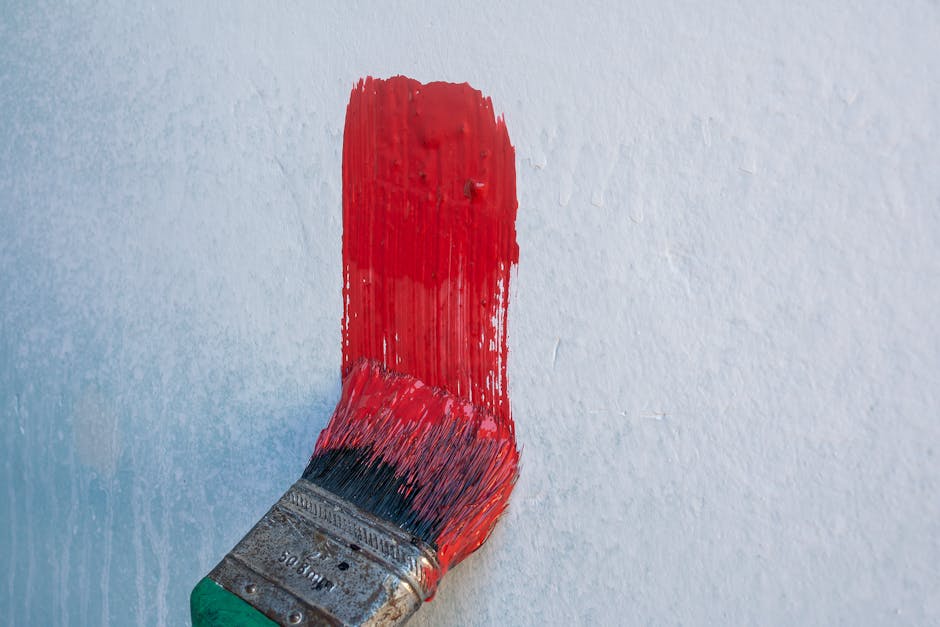The Paint That Claimed to Be ‘Easy’
Have you ever found yourself excited about a new paint, only to be let down by it’s performance? Many people have been there! When a paint claims to be ‘easy’ to use, it raises expectations. But does it really deliver? Let’s dive into the world of paint and discover what it means for a product to be labeled as ‘easy.’
What Makes Paint ‘Easy’?

When paint is marketed as ‘easy,’ it suggests several things. It should be simple to apply, quick to dry, and clean up easily. But is that always the case? Understanding what ‘easy’ means can help you choose the right paint for your project.
- Easy Application: This means you can use a brush, roller, or spray with little effort.
- Quick Drying: Paint that dries fast allows you to finish your project sooner.
- Simple Cleanup: Easy cleanup means less time scrubbing tools and surfaces.
These features sound great, but they also depend on the right tools and techniques. For example, using a high-quality brush can make any paint easier to apply.
Why Do Consumers Seek ‘Easy’ Paint?

People love convenience. Life is busy, and a DIY paint job can feel overwhelming. The promise of ‘easy’ paint appeals to those looking to refresh their space without a lot of hassle. But theres more to it.
According to a survey by the National Paint and Coatings Association, nearly 70% of homeowners tackle DIY painting projects. With so many people jumping into painting, the demand for easy-to-use products grows.
Imagine a busy parent wanting to spruce up their child’s room. They want something that won’t take all day and won’t leave a huge mess. that’s where ‘easy’ paint comes in!
Do All ‘Easy’ Paints Live Up to the Hype?

Just because a paint claims to be easy doesnt mean it always is. Many factors affect it’s performance. Here are a few common things to consider:
- Quality: Higher-quality paints often perform better than cheaper options.
- Type: Different types of paint (latex vs. oil-based) behave differently.
- Surface: The surface you’re painting can affect how ‘easy’ it feels.
For example, latex paint is typically easier to work with than oil-based paint. It dries quickly and cleans up with soap and water. However, it might not adhere well to a glossy surface without proper prep work.
What Should You Look for in ‘Easy’ Paint?

When shopping for ‘easy’ paint, consider these key features:
- One-Coat Coverage: Look for paints that cover well in one coat. This saves time!
- Low Odor: Paints with low odor make indoor projects more comfortable.
- Durability: Check for paints that resist stains and can be wiped clean.
Brands often highlight these features in their product descriptions. don’t hesitate to ask store staff for recommendations based on your specific needs.
How to Prepare for Painting
Preparation is key for any painting project. Even the best ‘easy’ paint can struggle without proper prep. Heres a simple checklist to get you started:
- Clean the surface youll be painting.
- Patch any holes or cracks.
- Sand rough spots for a smooth finish.
- Tape edges for clean lines.
Taking these steps can make your project go smoother. You’d be surprised how much prep can affect the final result!
Are There Any Common Misconceptions?
Yes! Many people believe that ‘easy’ paint is only for beginners. This isn’t true. Even experienced painters appreciate products that simplify their work. Here are a couple of misconceptions to clear up:
- Only for DIYers: Professional painters also use easy-to-apply paints to save time.
- Easy Means Low Quality: Some high-quality paints are marketed as easy, blending performance with ease of use.
By understanding these misconceptions, you can make better decisions when choosing paint.
How Do You Actually Use ‘Easy’ Paint?
Using ‘easy’ paint is often straightforward, but here are some tips to maximize your experience:
- Start Small: Test the paint on a small area to see how it looks and applies.
- Use the Right Tools: Invest in good brushes and rollers designed for the paint type.
- Follow Instructions: Always read the label for specific instructions related to drying times and application techniques.
By following these tips, you can make the most of your ‘easy’ paint experience.
What Are Some Popular Brands of ‘Easy’ Paint?
Many brands offer ‘easy’ paint options. Here are a few favorites among DIYers:
- Behr Premium Plus: Known for it’s one-coat coverage and durability.
- Valspar: Offers a range of finishes and low-VOC options.
- Rust-Oleum: Great for special projects like furniture or outdoor items.
Each brand has unique features, so picking the right one depends on your specific needs.
What Do Experts Say About ‘Easy’ Paint?
Experts often emphasize that while ‘easy’ paint can simplify a project, it’s important to choose wisely. Painter and educator John Smith says, “The right paint can streamline your work, but preparation is still key.” His advice highlights the importance of both product quality and proper setup.
Listening to experts can save you time and effort, and lead to a more satisfying outcome!
How Can You Make the Most of Your ‘Easy’ Paint?
To truly make the most of your paint, keep a few final tips in mind:
- Plan your project carefully to avoid surprises.
- Consider the time of year. Painting in dry weather can yield better results.
- don’t rush! Allow adequate drying time between coats.
By following these tips, youll enhance your painting experience and get a beautiful finish.
Conclusion: Is ‘Easy’ Paint Right for You?
In the end, ‘easy’ paint can simplify your project, but it’s not a magic solution. To get the best results, combine quality products with proper preparation and techniques. Whether you’re a seasoned pro or a first-time painter, understanding what ‘easy’ really means will help you choose wisely.
So, next time you’re ready to tackle a painting project, remember these insights. Choose the right paint and prepare properly, and youll find that painting can be an enjoyable experience!
For more tips on home improvement, check out our related post on DIY Home Improvement Tips.
Happy painting!



